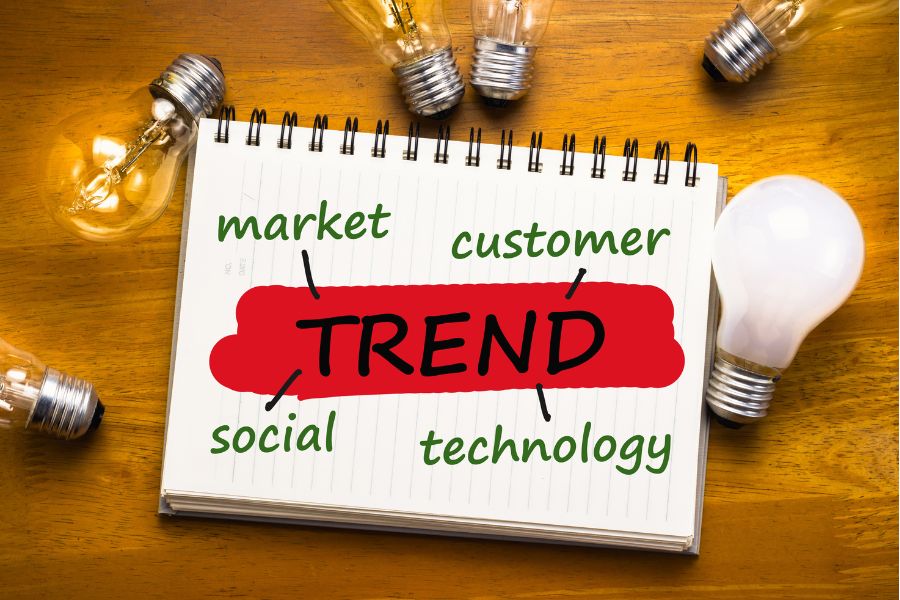Digital product design has become a vital element in today’s technology-driven world, playing a crucial role in how we interact with digital interfaces, from websites and mobile apps to virtual reality experiences. This field encompasses the creation of digital products that are not only functional but also visually appealing and user-friendly.
By merging art and technology, digital product design creates seamless experiences that captivate users while achieving business objectives. As businesses increasingly depend on digital platforms, the role of a digital product design agency is becoming more critical in delivering innovative solutions that cater to the growing demands of consumers and enterprises alike.
What is Digital Product Design?
Digital product design refers to the process of creating digital products, such as websites, mobile applications, and software that are both functional and aesthetically pleasing. It is a multidisciplinary field that involves a combination of user experience (UX) design, user interface (UI) design, and interaction design.
The primary goal of digital product design is to solve problems and create intuitive, enjoyable experiences for users. This process includes understanding user needs, conducting research, wireframing, prototyping, testing, and finally, implementing the design.
The Importance of User-Centered Design
One of the key principles of digital product design is user-centered design. This approach focuses on the needs, wants, and limitations of end-users at every stage of the design process. By keeping the user at the center, designers can create products that are not only useful but also easy to use and enjoyable.
User-centered design involves extensive research, including user interviews, surveys, and usability testing, to gather insights and feedback. This iterative process ensures that the final product meets user expectations and provides a positive experience.
The Role of UX and UI Design
UX (User Experience) and UI (User Interface) design are integral components of digital product design. UX design is concerned with the overall experience a user has while interacting with a digital product.
It involves understanding the user's journey, identifying pain points, and designing solutions that improve usability and satisfaction. UI design, on the other hand, focuses on the visual aspects of a digital product, such as layout, color schemes, typography, and interactive elements.
A well-designed UI ensures that the product is visually appealing and easy to navigate, enhancing the overall user experience.
The Design Process: From Concept to Completion

Source: Canva Pro
1. Research and Discovery
The first step in the digital product design process is research and discovery. This involves understanding the target audience, market trends, and competitors. Designers gather data through various methods, such as surveys, interviews, and analytics, to identify user needs and pain points. This information forms the foundation for creating a product that addresses specific problems and fulfills user expectations.
2. Ideation and Concept Development
Once the research is complete, the next step is ideation and concept development. This involves brainstorming and generating ideas for the product. Designers create wireframes and sketches to visualize the product's structure and layout. This stage allows for exploring different design solutions and refining concepts before moving on to the next phase.
3. Prototyping and Testing
Prototyping is a crucial stage in the design process where designers create a preliminary version of the product. Prototypes can range from simple paper sketches to interactive digital models. The purpose of prototyping is to test and validate design concepts with real users.
Usability testing is conducted to gather feedback and identify areas for improvement. This iterative process ensures that the product is functional, user-friendly, and aligned with user needs.
4. Visual Design and Branding
After refining the prototype, the focus shifts to visual design and branding. This stage involves creating the final look and feel of the product. Designers choose color schemes, typography, and imagery that align with the brand's identity and resonate with the target audience. Consistency in visual elements helps establish a strong brand presence and enhances user recognition and trust.
5. Development and Implementation
Once the design is finalized, the development phase begins. This involves collaborating with developers to bring the design to life. Designers work closely with developers to ensure that the final product matches the design specifications and functions as intended. This stage may involve coding, programming, and integrating various technologies to create a seamless and functional digital product.
6. Launch and Post-Launch Evaluation
The final stage of the design process is the launch and post-launch evaluation. After thorough testing and quality assurance, the product is launched to the market.
However, the design process does not end here. Post-launch evaluation involves monitoring user feedback, analyzing data, and making necessary updates and improvements. Continuous optimization ensures that the product remains relevant, user-friendly, and competitive.
The Importance of Collaboration in Digital Product Design

Source: Canva Pro
Cross-Functional Teams
Successful digital product design relies heavily on collaboration among various disciplines. Cross-functional teams, which include designers, developers, product managers, marketers, and researchers, work together to bring a product from concept to reality.
Each member brings a unique perspective and set of skills to the table, contributing to a holistic approach to design. Collaboration ensures that the product is not only visually appealing but also technically feasible, aligned with business objectives, and market-ready.
Continuous Feedback Loop
A critical aspect of collaboration is maintaining a continuous feedback loop throughout the design process. Regular feedback sessions allow team members to share insights, address challenges, and iterate on design solutions.
This ongoing dialogue helps identify potential issues early on, saving time and resources in the long run. Engaging stakeholders, including clients and end-users, in the feedback process ensures that the final product meets the needs of all parties involved.
By fostering a culture of collaboration and open communication, digital product design teams can create products that truly resonate with users and stand out in the market.
Trends in Digital Product Design

Source: Canva Pro
1. Emphasis on Accessibility
Accessibility is becoming increasingly important in digital product design. Designers are focusing on creating products that are inclusive and accessible to all users, including those with disabilities. This involves following accessibility guidelines, such as providing alternative text for images, using readable fonts, and ensuring that the product is navigable using assistive technologies.
By prioritizing accessibility, designers can create products that cater to a wider audience and provide a better user experience for everyone.
2. Use of AI and Machine Learning
Artificial Intelligence (AI) and Machine Learning (ML) are transforming the field of digital product design. These technologies enable designers to create personalized and adaptive experiences for users.
For example, AI can analyze user behavior and preferences to provide tailored recommendations and content. Machine learning algorithms can optimize user interfaces based on user interactions, making the product more intuitive and efficient. The integration of AI and ML in digital product design is paving the way for smarter, more responsive digital experiences.
3. Focus on Micro-Interactions
Micro-interactions are subtle, interactive elements that enhance user engagement and provide feedback. Examples of micro-interactions include button animations, hover effects, and loading indicators. These small design details play a significant role in improving the overall user experience.
By focusing on micro-interactions, designers can create more engaging and delightful products that capture users' attention and make interactions more enjoyable.
The Role of Digital Product Design Companies
About Glow: A Leading Digital Product Design Company
Glow is a premier digital product design company that specializes in creating innovative and user-centric digital experiences. With a team of skilled designers, developers, and strategists, Glow combines creativity and technology to deliver exceptional digital products that drive business success.
The company offers a range of services, including UX/UI design, web and mobile app development, and branding. Glow's approach is centered around understanding clients' needs, conducting thorough research, and implementing cutting-edge design solutions.
By partnering with businesses across various industries, Glow helps them create digital products that resonate with their audience and achieve their goals.
The Future of Digital Product Design
The future of digital product design is exciting, with new technologies and trends continuously emerging. As technology advances, designers will have more tools and resources to create innovative and immersive digital experiences. The focus will shift towards creating more personalized, accessible, and sustainable products that meet the evolving needs of users.
The integration of virtual reality (VR), augmented reality (AR), and voice interfaces will open new possibilities for digital product design, making interactions more natural and engaging.
Moreover, the importance of ethical design and data privacy will become increasingly relevant as designers strive to create products that are not only innovative but also responsible and trustworthy.
Conclusion
Digital product design is a dynamic and essential field that plays a vital role in shaping the way we interact with technology. By focusing on user-centered design, leveraging new technologies, and staying ahead of trends, designers can create digital products that are not only functional but also meaningful and impactful.
Companies like Glow are at the forefront of this evolution, driving innovation and helping businesses create exceptional digital experiences. As the digital landscape continues to evolve, the importance of thoughtful and innovative digital product design will only continue to grow, making it an exciting and rewarding field for designers and businesses alike.






